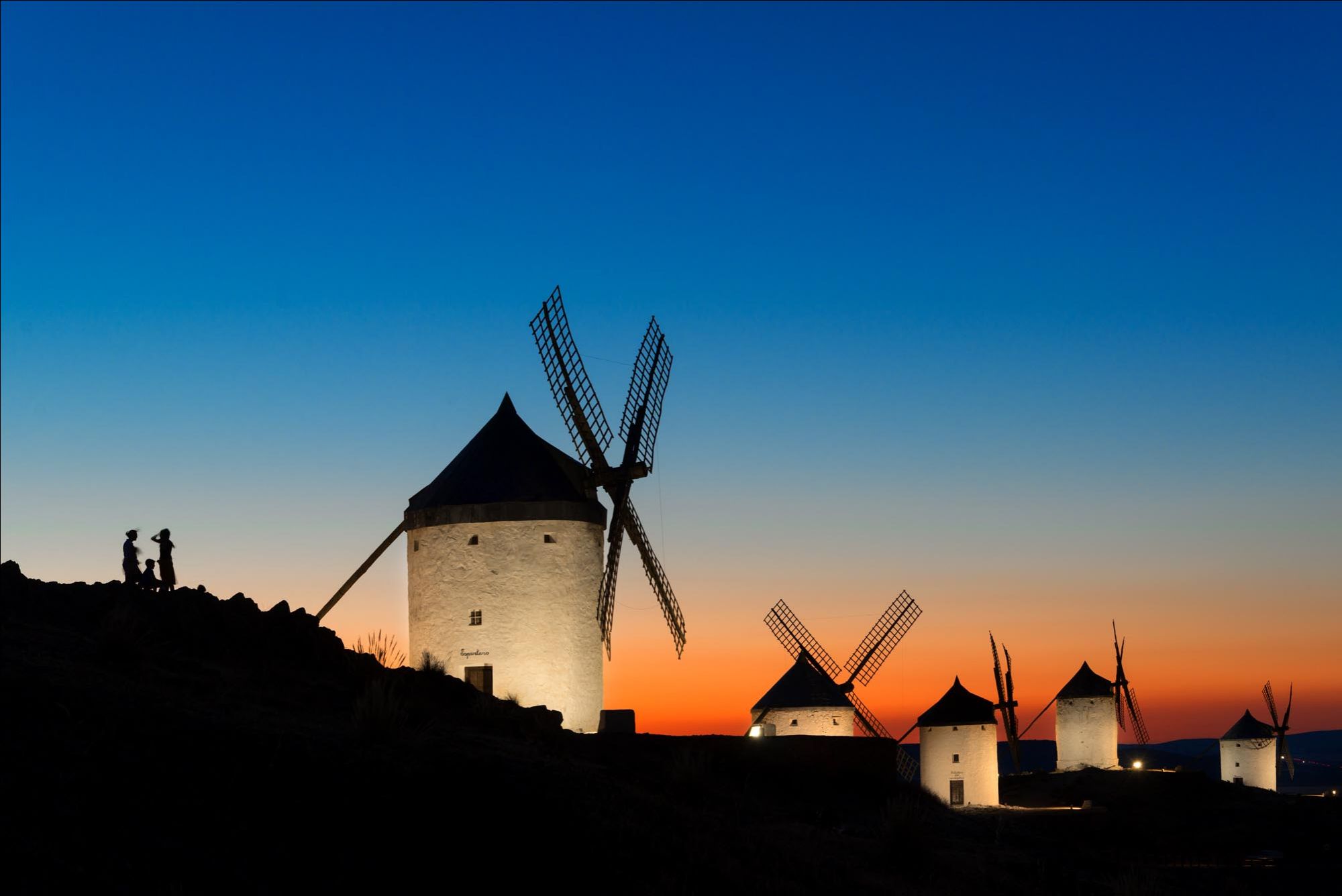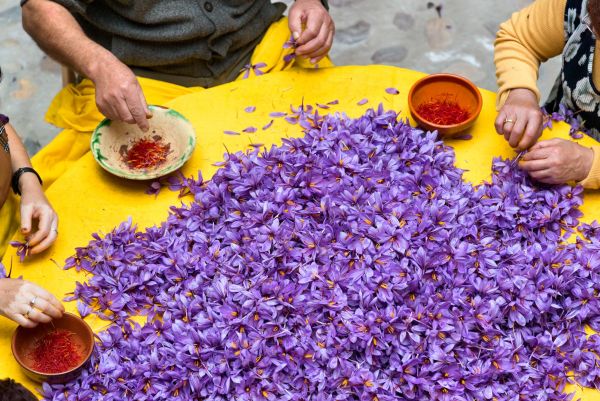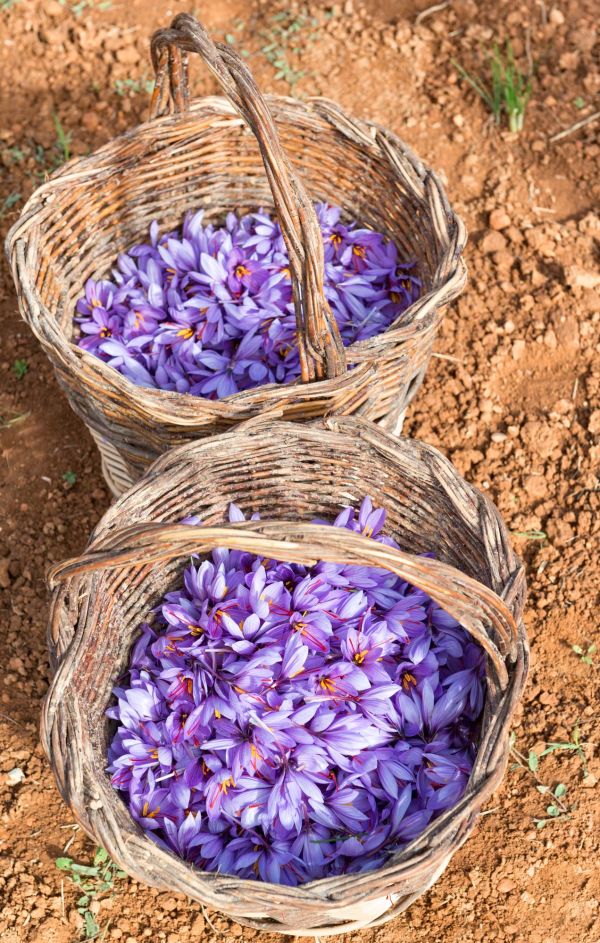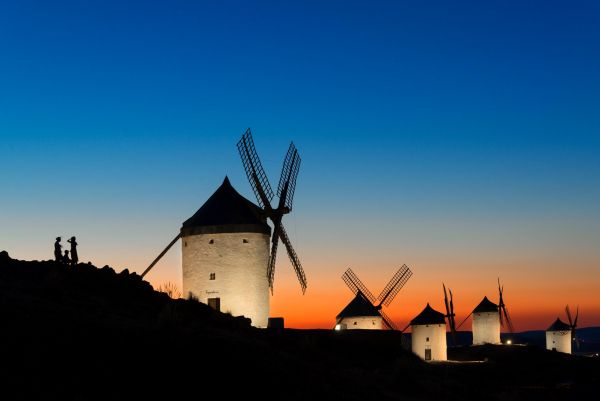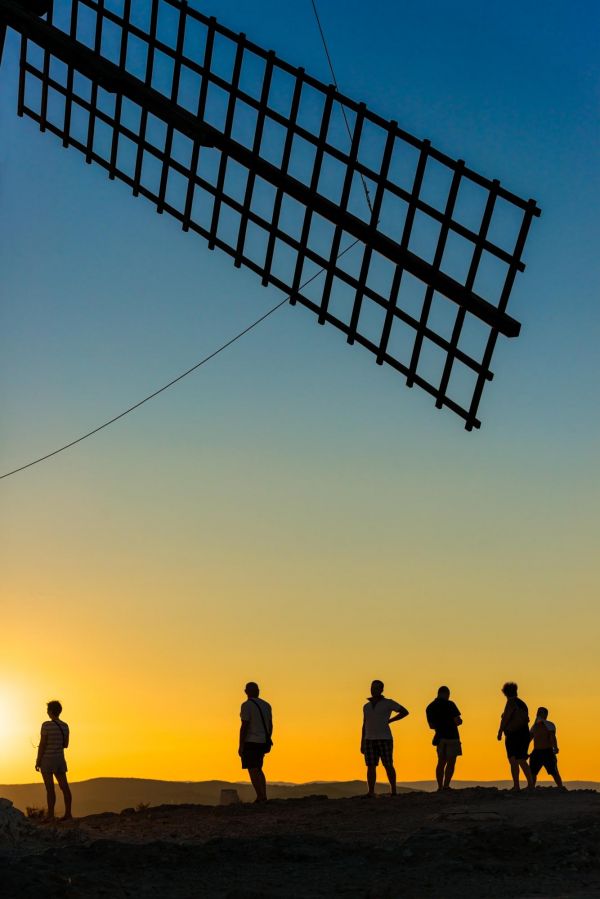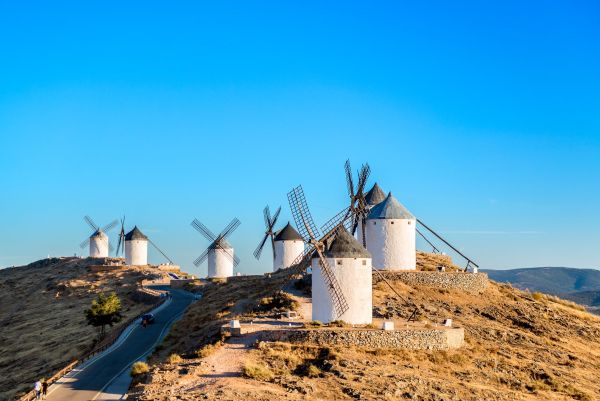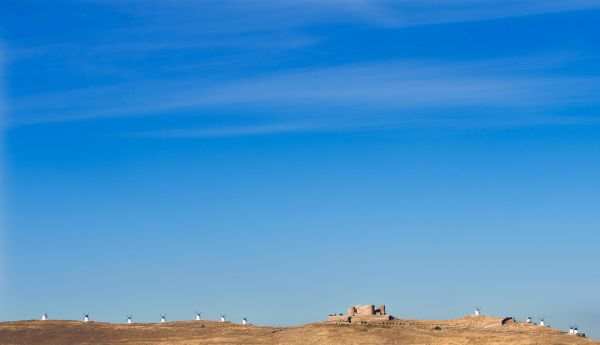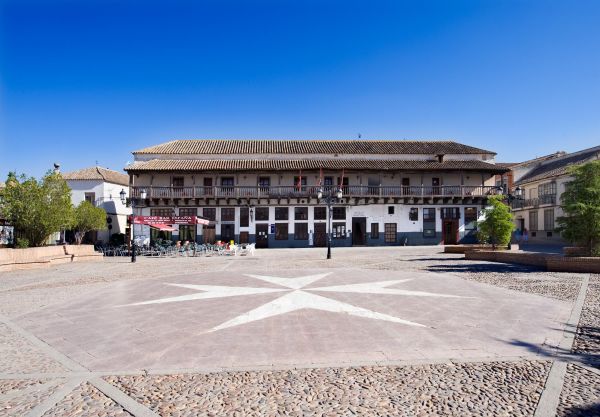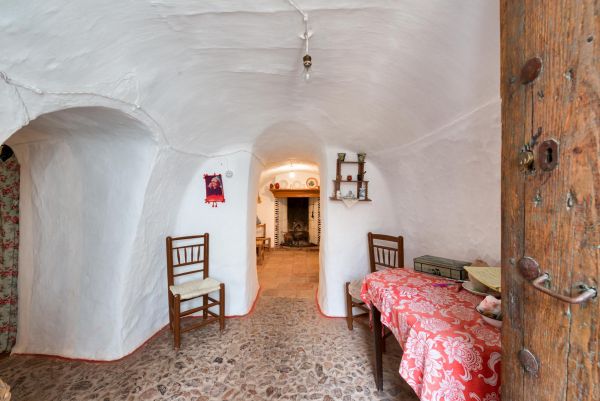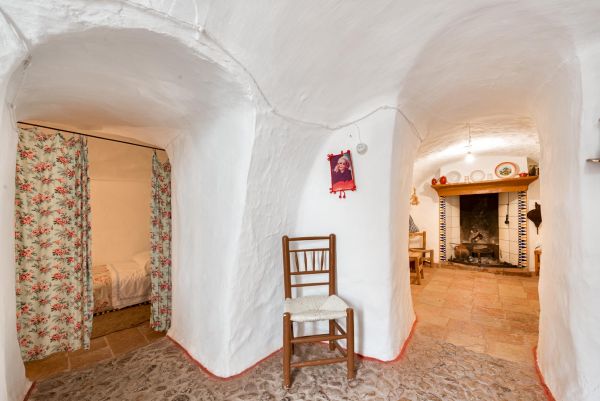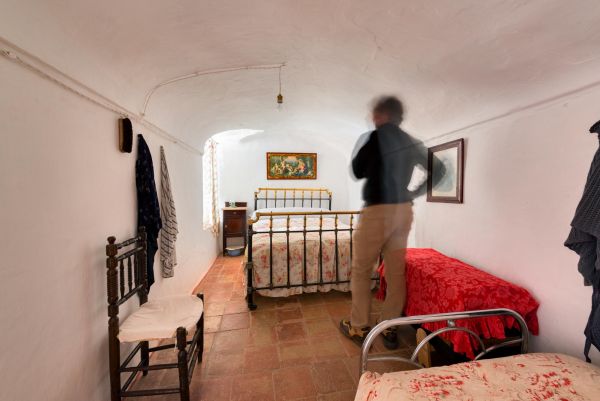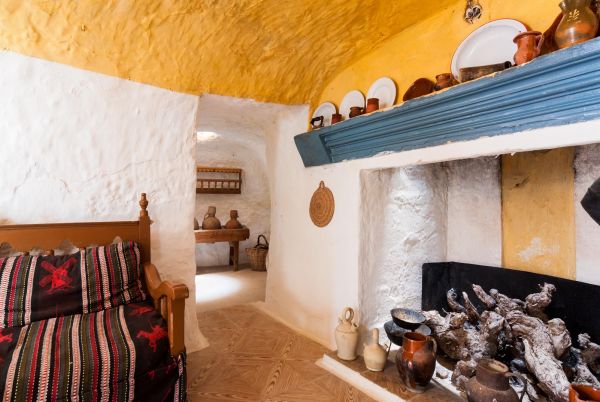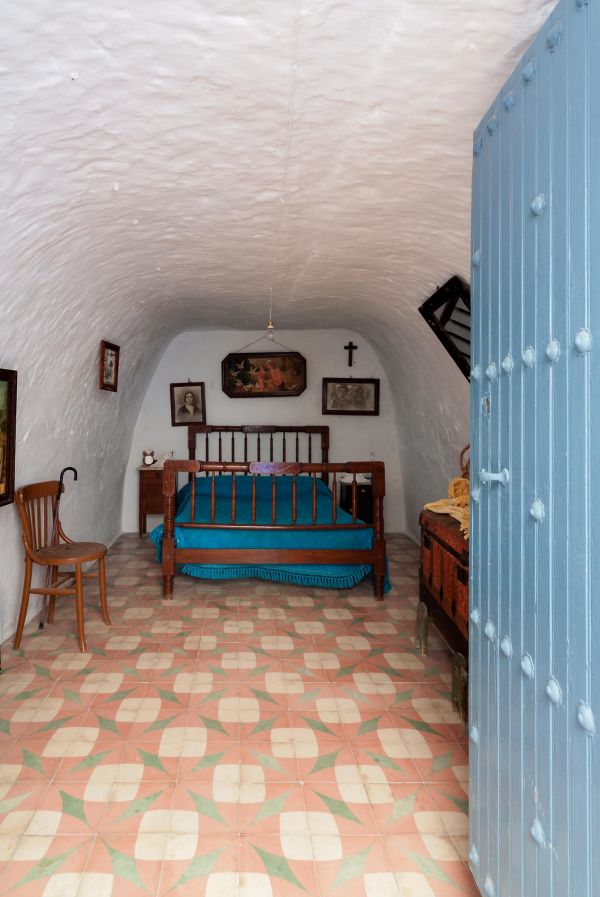Consuegra and the La Mancha silos
Toledo
The Calderico de Consuegra hill, crowned by its 12 windmills and Muela castle, is visible from miles away, perhaps offering the most iconic image of the region. Now in the town, a stroll around its squares and streets offers a slice of traditional La Mancha and Castile.
The hike up Calderico hill is a must. Watching the sunset from up above, over the sweeping La Mancha countryside, is a pleasure for the senses.
Access to the hill and the zone outside the windmills is free and can be at any time. However, of the 12 windmills, only 3 are open to the public: Rucio, which can be put into operation with a guided tour (almost) every day and houses a local crafts and products store on its lower floor; the Bolero windmill, which is home to the municipal tourist office; and Caballero del Verde Gabán, a restaurant or gastrobar.
The Rucio windmill, as we were saying, can be visited as part of a guided tour during milling. The miller (one of the few still active) will explain how this original machinery, dating back to the 16th century, works during the demonstration.
Entry: €1.50
Opening hours
Open: Monday to Sunday from 9 am to 6:30 pm.
Milling: Thursday to Sunday from 10 am to 2 pm and from 4 pm to 6 pm.
Closed on 24, 25 and 31 December and 1 January.
No milling in January, July and August.
Muela castle can be seen inside and outside in its original state, as it is one of the best preserved castles in the autonomous community and has been perfectly restored. Visits mean walking around its walls and the weapons courtyard, and going inside.
Built between the 9th and 10th centuries, the castle is a perfect blend of Arabic and Castilian architecture. It currently offers a wide range of cultural activities.
Down below in the town, the Spain square is the epicentre of the city: the sombre town hall, dating to 1670, with its Toledo style, is connected by an arch to the watch tower; the San Gumersindo Palace, from the 20th century and in Mudejar style; the 17th century ‘Los Corredores’ building, with a beautiful balcony made of typically La Mancha wood, which was silo, corn exchange and town hall, and currently houses the Municipal Archaeology Museum.
Religious architecture is also widely represented, as to be expected: the chapel of the Holy Christ of Veracruz, with its white marble façade; the parish church of Santa María la Mayor, with its Mudejar crypt; the Convent of the Mothers of the Immaculate Conception, which recreates the Mudejar Gothic style, and many more edifices showcase this town’s spiritual importance.
Madridejos is just 9 km from Consuegra.
In Madridejos we can take a pleasant stroll and explore its hidden corners; the parish church of Salvador, built at the orders of Covarrubis; close by, the Convent of San Francisco, which now houses the Palace of Culture, the Tourist Office and the Saffron Museum.
Madridejos isn’t just religious architecture, the Casa Grande or Casa Cadenas are also highlights, as are the pillory, the Town Hall and the 19th century bullring, catalogued as an Asset of Cultural Interest.
Among all the popular architecture, there are the eye-catching silos, humble, underground homes that no longer have their primitive functions, but still exist and allow visits. These unique constructions in Europe are architectural heritage of La Mancha.
In Madridejos, the Council have bought and renovated two silos:
- at Tío Colorao, C/ San Agustín, 9.
- and at Tío Zoquete, Travesía del Cristo, 13.
The lives of the families who occupied them have been recreated inside. Two genuine museums taking us back in time to when they were inhabited.
Entrance through organised visits 925 460 016 (Extension 5-0)
In the nearby town of Villacañas, the strange Silo Museum reveals the jewel of popular Villacañas architecture. The household items and furniture are displayed in the museum.
Visits: contact the guide on 620 659 191.
Opening hours: Closed on Mondays. From October to April: from 11:30 am to 2 pm and from 4 pm to 5:30 pm. From May to September: from 5 pm to 6:30 pm Sundays and holidays: from 11:30 am to 2 pm.
The celebration of festivals such as Rosa del Azafrán in October and Medieval Consuegra in August are testimony to a town that preserves a medieval past and traditions dating back centuries.
May also be of interest to you
Castilla-La Mancha Tourism in 2023. All rights reserved.
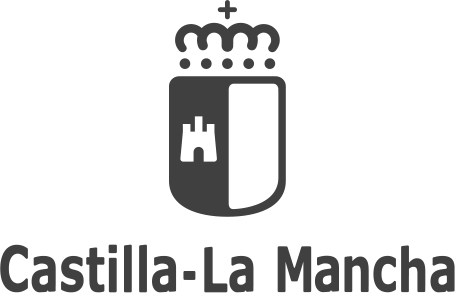
 365
365
